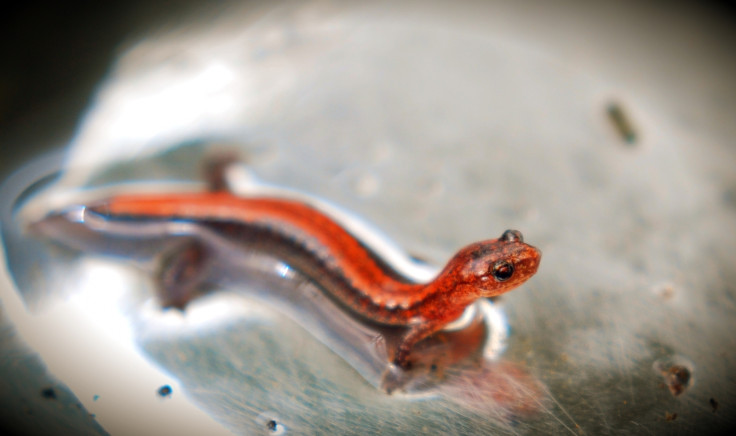35-million-year-old petrified salamander discovered with internal organs perfectly preserved
Salamander has an incredible level of detail preserved, including its spinal cord, gut, muscle and glands.
An extremely well-preserved salamander has been discovered in France with many of its soft organs intact. The mummified bones of a frog are even present in its stomach.
Salamanders are amphibians that have a unique lizard-like appearance. They have four toes on the front limbs and five on their rear limbs. In mythology, salamanders are said to be able to survive fire.
In this 35-million-year-old specimen, the salamander's lung, nerves and gut are in the best condition, with parts of the muscle, spinal cord, digestive tract and glands still discernible too.
Despite the fine detail of the soft organs in the specimen, the salamander's whole body hasn't been preserved. Only the trunk, hip, part of the hind legs and tail still survive.
"This fossil, along with a few others from the same lost site, is the most incredibly well-preserved that I have seen in my entire career," said study author Michel Laurin of the Museum of Natural History in Paris.
Salamanders very rarely eat frogs, but they are also known to be opportunistic feeders when needs must. Exactly why this salamander resorted to a frog diet will sadly never be known.
The specimen was first discovered in the 1870s, and had never been studied in detail. The researchers used synchrotron technology, the ID19 beamline of the European Synchrotron Radiation Facility in France, to probe the creature's skeleton and organs.
"140 years after its discovery, and 35 million years after the animal died, we can finally study it, thanks to modern technology."
The discovery is reported in the journal PeerJ. Such preservation is incredibly rare. About 99% of fossils have only preserved hard body parts, such as skeletons or hard outer shells.

© Copyright IBTimes 2024. All rights reserved.







